Drawings of Fruits That Grow on Trees
Most gardeners aren't lucky enough to have a fully south facing garden that receives maximum sunlight throughout the day.
You might have one sunny patch and then a whole lot of shady spots, and be wondering what fruiting plants you can grow in those areas that only get a few hours of sunlight per day.
Though most fruit trees need at least six to eight hours of sunlight to flourish. However, there are a number of shade-loving fruits and berries that actually do surprisingly well in shaded areas, so don't think of them as a limitation but rather an opportunity to grow and experiment with something new!
Read on to learn about 16 of the best fruit-bearing trees, bushes, and vines to grow in the shaded parts of your garden, so you can use your space to its fullest potential.
Understanding Sun Exposure
You might have seen on the back of your seed packets there is a little symbol of a sun accompanied by a description stating whether this particular plant needs full or partial sun, also described as shade tolerant.
There aren't any fruits or vegetables that grow in full shade, meaning no sunlight, as almost every crop needs at least a few hours of sunlight per day to grow. Mushrooms, however, can grow in full shade.
Full Sun
Full sun indicates that the plant requires at least 6 hours of direct sunlight per day to grow, thrive, and produce optimally. This is a very common sun requirement for most fruits and vegetables.
These crops will perform significantly worse or may even die if they receive less than 6 hours of sun per day during the growing season.
Full to Partial Sun
Full to partial sun indicates that the plant in question prefers full sun, but can tolerate partial sunlight and some shade.
The plant won't be quite as happy and yields may be slightly smaller, but the plant will survive and produce in a spot that receives shade for part of the day.
Partial Shade or Shade Tolerant
Partial Sun or Shade tolerant implies that the plant can do well in a spot that receives only a few hours of sunlight per day, and it may actually prefer it. There are a number of fruit trees that fall into this category, as well as leafy greens.
15 Best Fruiting Plants That Grow In The Shade Garden
The following list will introduce you to some fruits that you can grow in partial shade.
Keep in mind that while some of these fruits will do just fine in shady spots, others will just tolerate the lack of light and would actually prefer more sunlight.
This may affect their fruit production and result in a slightly decreased harvest with less sweet fruits.
Here are 15 most tolerant shade loving fruiting plants that will thrive if they receives as few as two to four hours of direct sunlight a day, or constant dappled light for the full day.
1: Rhubarb
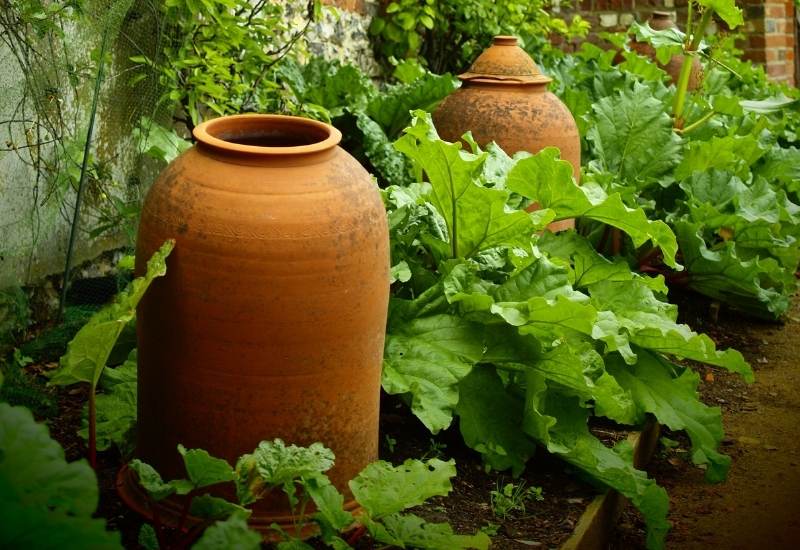
Rhubarb is a cold season crop which is actually not technically a fruit, as the edible portion is the long succulent stalk of each leaf.
The leaves themselves are quite toxic so make sure to keep children and pets away from it. It is a low maintenance perennial that will return every season, and will grow well in partial shade.
2: Hardy Kiwi
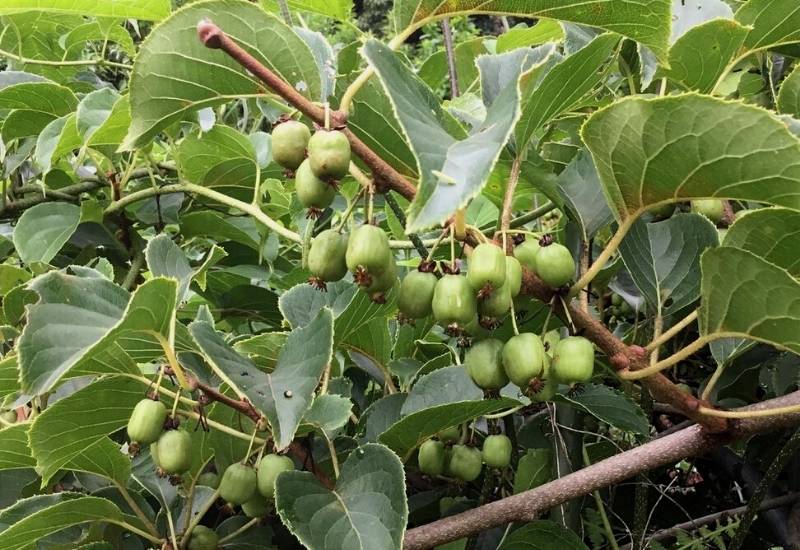
Hardy kiwi is a perennial plant that grows as a vine and produces smaller versions of the popular kiwifruit. It is cold tolerant and produces fruit in the fall. It can be grown in full sun but tolerates partial shade, although the foliage may be less vibrant.
3: Muscadine Grapes
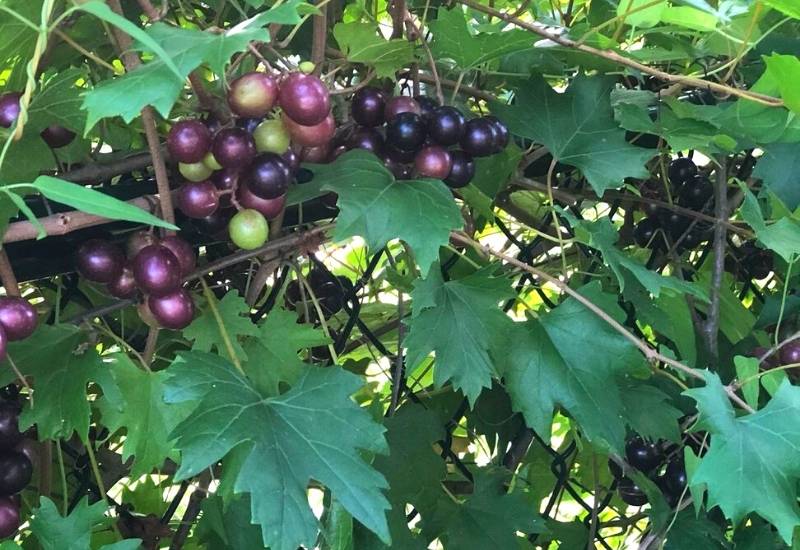
If you live in a southern region of North America, you can grow Muscadine grapes in partial shade, although they will produce significantly more fruit with increased sunlight. They grow on vines with lots of green foliage, and produce large, round fruits.
4: Plums
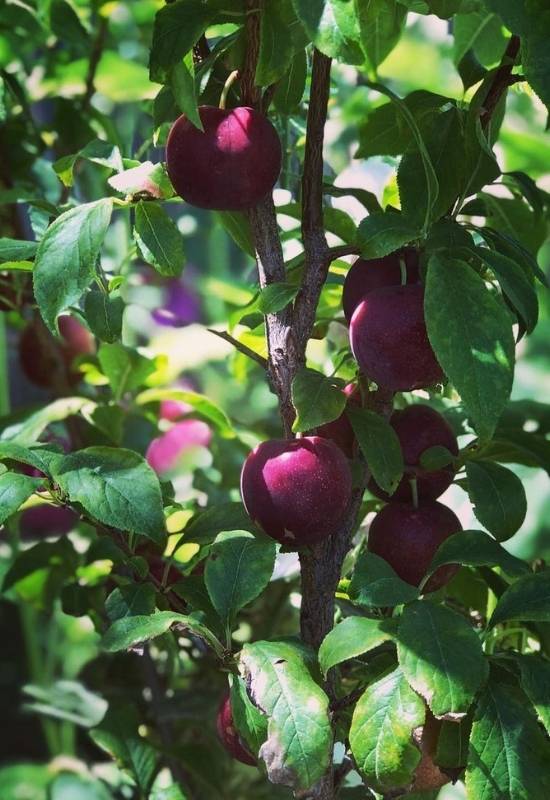
Plums will grow fine in areas with partial shade, preferably in spots that receive morning sun and shade in the afternoon. Trees can be dwarf or full-size and will produce small, oval shaped fruits that are usually purple or red.
5: Pears
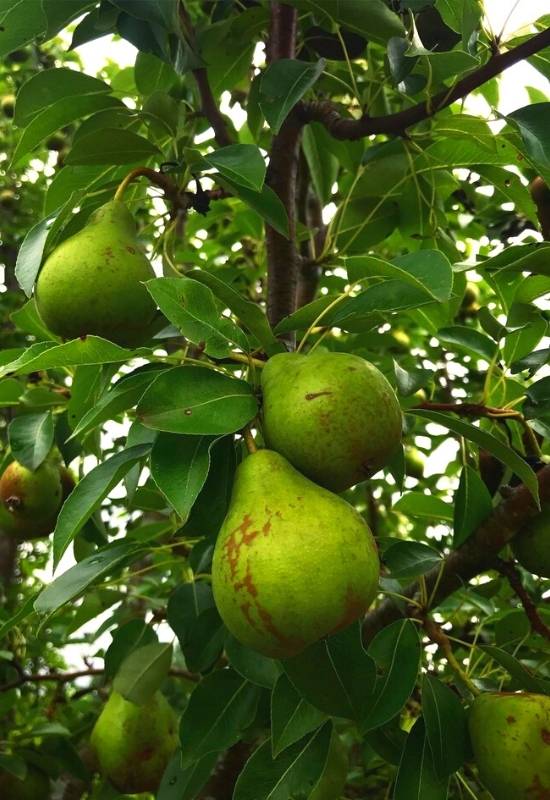
Pear trees are fairly hardy and low maintenance fruit trees that grow well in colder climates. They prefer more sunlight but will still produce a decent harvest in partial shade. If you can, grow them in a west facing spot that receives morning shade and afternoon sun.
6: Cherries
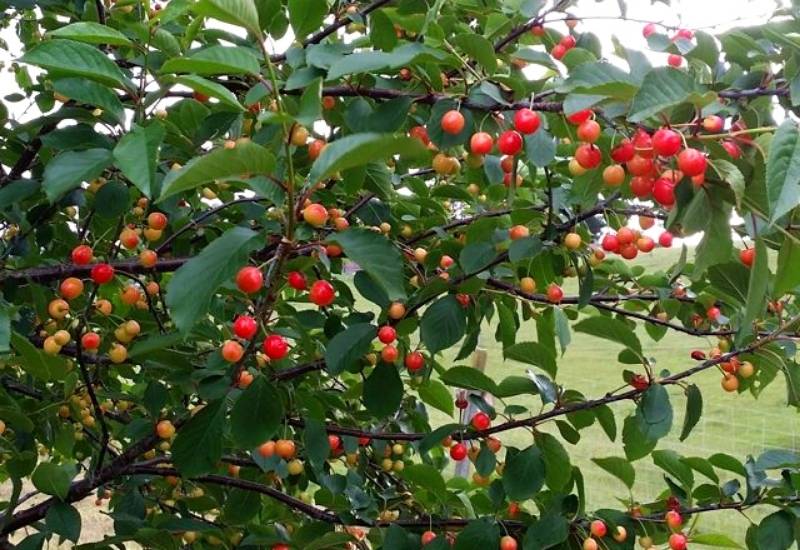
Most cherry trees are not shade tolerant but certain tart or sour cherries like 'Morello' will tolerate shady areas. The trees themselves can be grown alongside a wall that is east or west facing and they produce beautiful white blossoms.
7: Lowbush blueberries
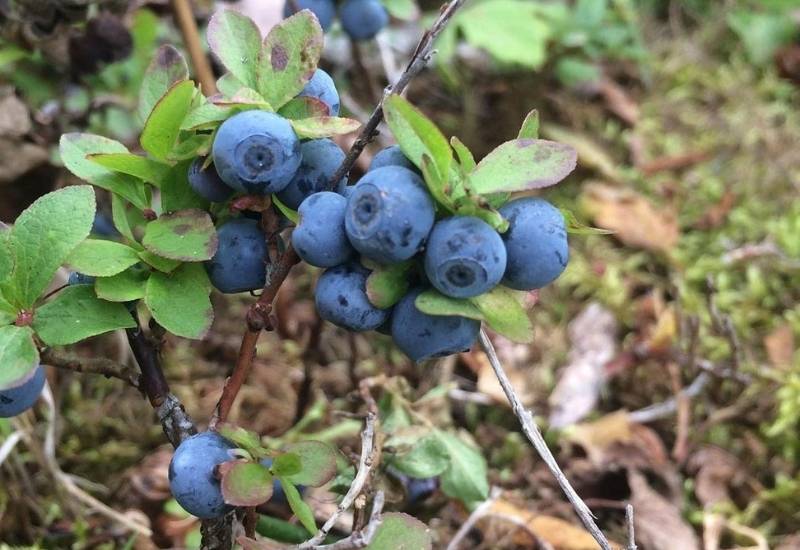
Also called wild blueberries, this smaller variety of the more common highbush blueberry can be cultivated in a garden but is still often foraged in the wild.
They are shade tolerant due to the fact that they would typically grow in the shady understory of forests and other vegetation.
8: Blackcurrants & Redcurrants
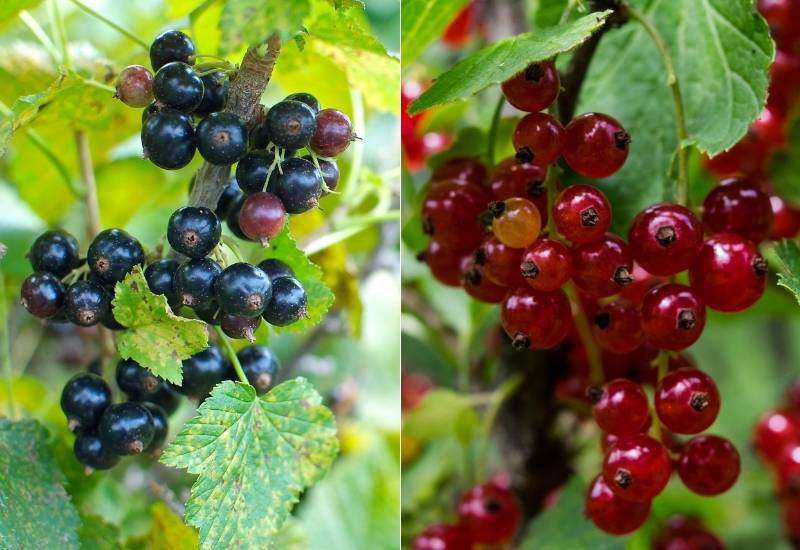
Most types of currants will tolerate partial sunlight as, similar to blueberries, they would usually grow wild in the shaded areas of a forest.
If you live in a warm climate, they will actually perform better with afternoon shade and the protection it provides from high temperatures. They are low maintenance bushes with tasty, small berries.
9: Blackberries
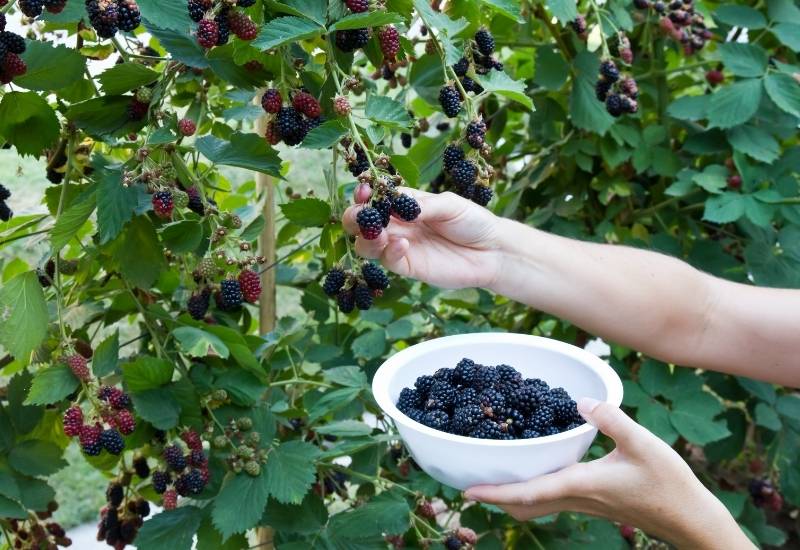
Blackberries are one of the most common fruits that are grown in the shade, and they have been used as natural (and thorny!) fences and wall covers throughout history.
More exposure to sunlight will increase fruit production, but you will still get a significant harvest in partial shade.
10: Lingonberries
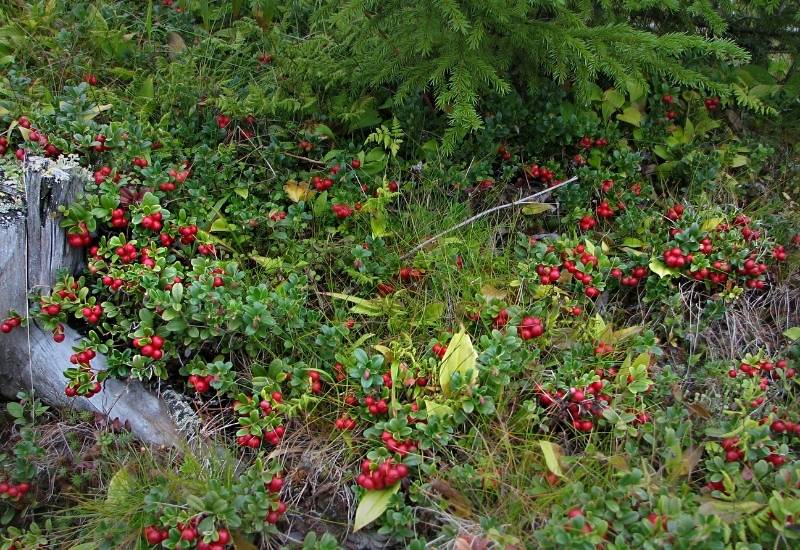
Lingonberries grow on a short evergreen bush and are shade tolerant. In fact, they do not do well in high temperatures as their native wild range is in Northern, temperate climates. Lingonberries require the same care as other berry bushes like wild blueberry.
11: Elderberries
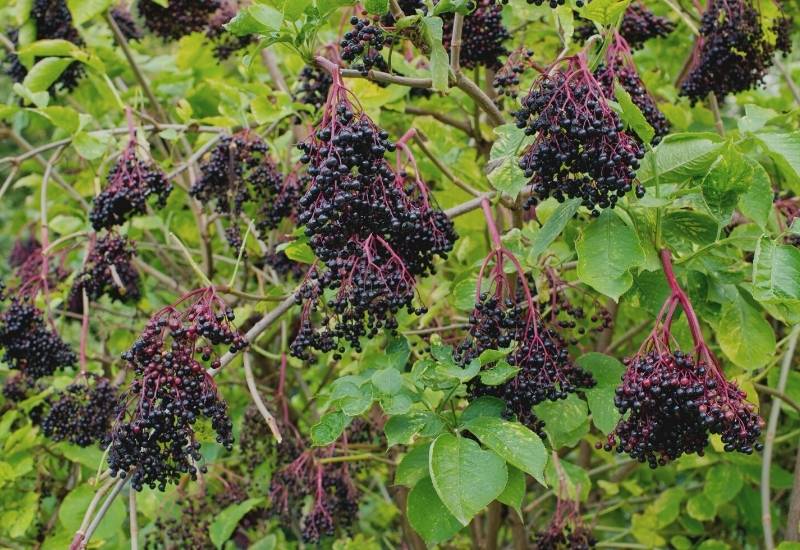
Elderberries will tolerate partial shade, but fruits will become sweeter when exposed to sunlight. They have a number of medicinal uses and are hardy in cold climates. They are grown for their attractive flowers as well as their berries, which attract many beneficial pollinators.
12: Gooseberries
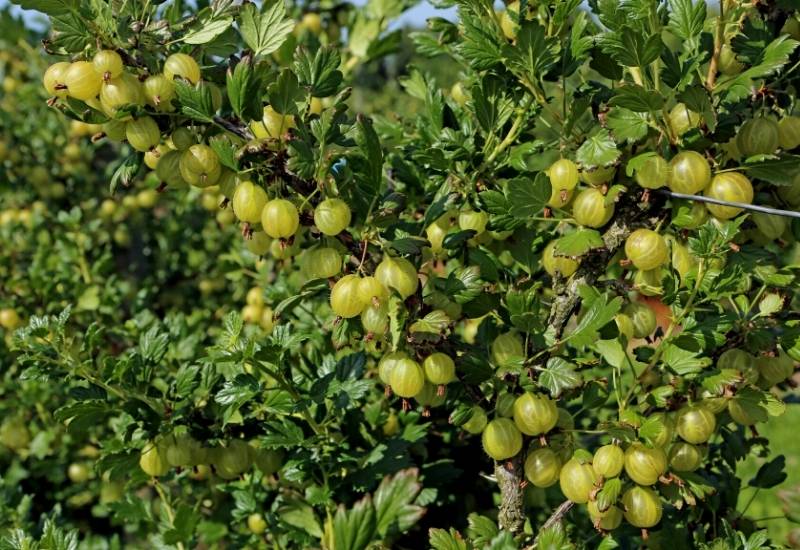
Bramble-y gooseberry bushes will grow well in partial shade, but like many other berries in this list will become sweeter the more that they are exposed to the sun. Once established bushes are low maintenance and will produce fruits for over a decade.
13: Juneberries
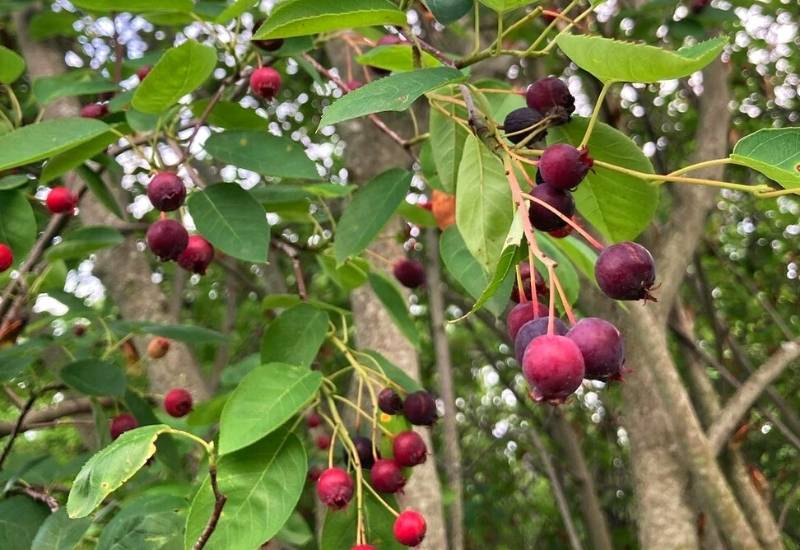
Also called saskatoon berries or serviceberries, these small trees are very cold hardy, as their native region is the Northern USA and Canada. They are relatively low maintenance and can grow in less than ideal soil conditions and with only partial sun.
14: Mulberries
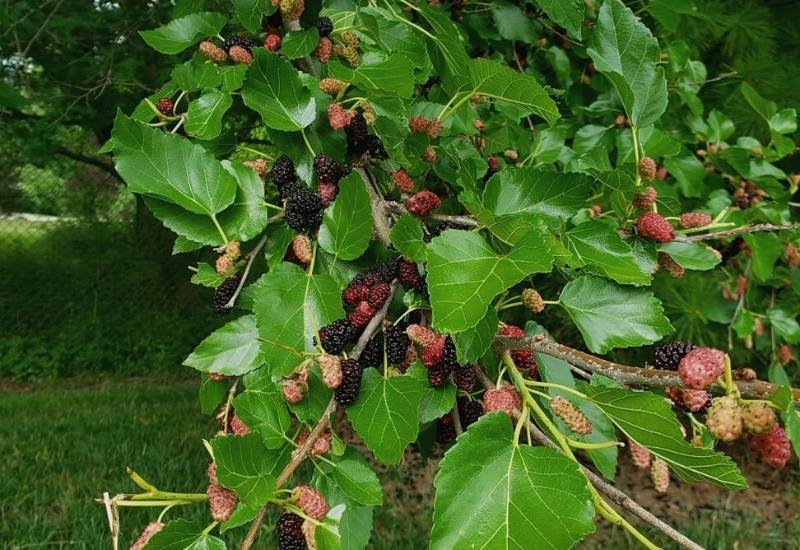
These small trees are cold hardy and fast growing, and will produce a sizable harvest in a spot that receives partial sunlight.
Once established the trees are fairly low maintenance and produce delicious, flavorful berries that come in a few different colors.
15: Raspberries
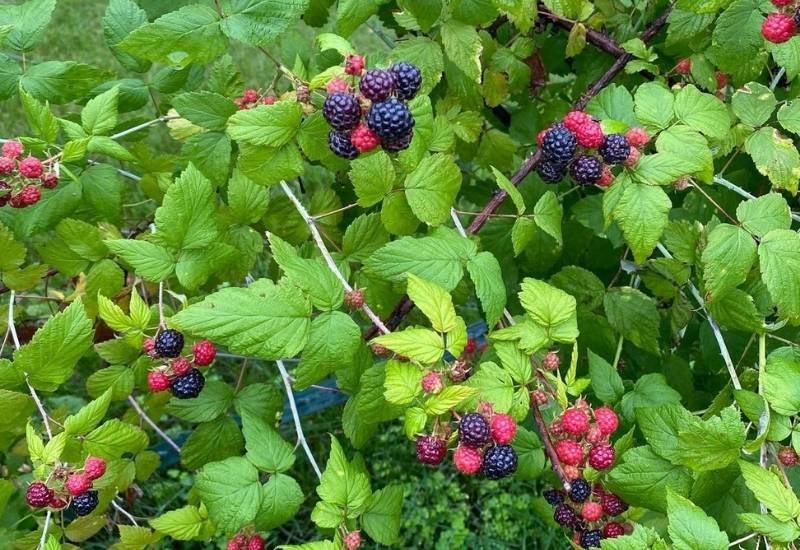
There are many varieties of raspberry that have been cultivated for the different times of year they produce fruit, and a number of them will produce well in partial shade. Like blackberries, their sprawling canes can get out of control easily if not pruned back at the end of the season.
16: Alpine Strawberries
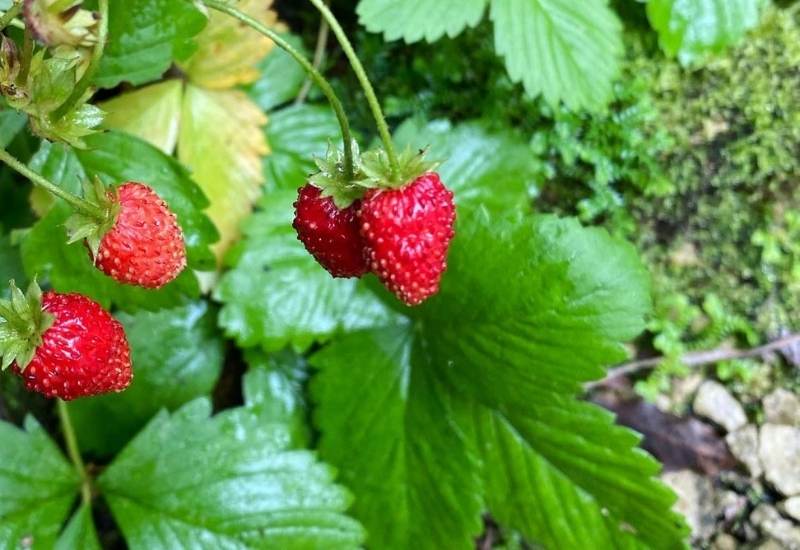
Alpine or mountain strawberries are smaller versions of the popular fruit that do well in partial shade due to their disposition for cooler, higher elevations that have fewer daylight hours. Note that regular strawberries need full sun.
Tips for Growing Fruiting Plants In The Shade Gardens
To fulfill the potential of your shaded garden, here are some important tips to keep in mind while growing the fruits listed above.
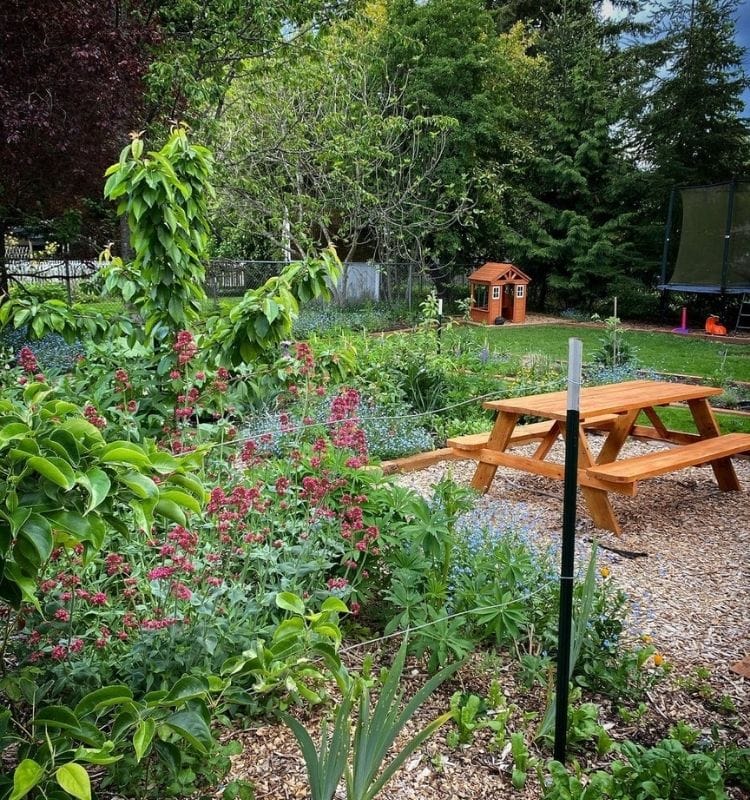

Maja is a freelance content writer and avid gardener currently based in Southern Sweden. She gained her BA in Environment and Geography in Montreal, Canada, which is also where she first learnt about the detriments of the industrialized agricultural system. During the summer she began farming through the WWOOF program, and over the next six years has continued to grow and learn at a number of organic farms and gardens across the US and Canada. She is passionate about the role of regenerative agriculture in wildlife conservation and climate change mitigation, and thinks growing your own food is a key part of revolutionizing the system. In her free time she likes to read, garden, and pet nice dogs.
Source: https://www.gardeningchores.com/15-best-fruit-trees-and-berries-to-grow-in-the-shade/
0 Response to "Drawings of Fruits That Grow on Trees"
Postar um comentário